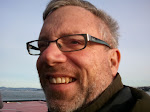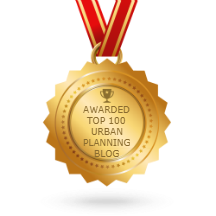Parks, access, equity and use
(I haven't been writing much since my heart disease relapse in June, but finally in mid-later-November I returned to a much better trajectory. I hope my writings have been missed. But I doubt it.)
I wrote a series in March and April about "gaps in parks planning" but really about parks planning more generally. I was re-reading it in preparation for a meeting this week and I realized it's quite good. I also have the intent to write some additional pieces for the series.
-- "Gaps in Parks Master Planning: Part Three | Planning for Climate Change/Environment"
-- "Gaps in Parks Master Planning: Part Four | Planning for Seasonality and Activation"
-- "Gaps in Parks Master Planning: Part Five | Planning for Public Art as an element of park facilities"
-- "Gaps in Parks Master Planning, Part Six | Art(s) in the Park(s) as a comprehensive program"
-- "Gaps in Parks Master Planning: Part Seven | Park Architectural (and Landscape Design) History"
-- "Gaps in Parks Master Planning: Part Eight | Civic Engagement"
-- "Gaps in Parks Master Planning: Part Nine | Second stage planning for parks using the cultural landscape framework"
I've written a lot in sustainable mobility planning about how in a car dependent and dominated mobility paradigm, people need assistance in making the switch to sustainable modes (let alone many places aren't particularly great places for sustainable mobility anyway--walking, biking and transit).
I have a post about this related to biking ("Revisiting assistance programs to get people biking: 18 programs"), this piece about bus transit ("Making bus service sexy and more equitable," 2012), and this about district-focused transportation programming ("What should the program for a Transportation Management District look like?").
So wrt that park series on my mind, a University of Utah student posted a query about their project on "Green space accessibility," focused on differential resources between high income and low income communities. It's typical in most cities that low income areas have fewer parks.
Jordan Park on 900 West, Salt Lake City.This comes up a lot in Salt Lake City, about the east side (high income) versus the west side (lower income, more racially diverse). See "Salt Lake City Seeks To Create More Equitable Outdoor Spaces For Residents," KUER/NPR, 2021), In general, I think it's somewhat of a crock--for Salt Lake City, not necessarily other places.
Not exactly, but it's more a result of historical geography. Because Salt Lake is and was a small place, the west side was pretty close to Downtown, and so it didn't develop a set of independent commercial districts--which it needs to now, to build its own centers. (I've been meaning to write a post about this, but have had some trouble articulating certain points.)
WRT green space, mostly the west side has as many parks as the east side with the exception of the east side having one more large park (the one I'm on the board on), and a couple larger spaces Downtown, but it's Downtown.
The west side has the Jordan River, which is "poorly located" in terms of the potential for use, but is complemented by a great trail (from Ogden to Provo) and it's an incomparable asset.And some of the biggest park investments the city is making now are on the west side, including adding another large park (Glendale Regional Park).
So equity is not just about access, it's about usage--which is deserving of a separate entry in the series. (More choice is a neoliberal position.)
And while maybe higher income people have a higher but not absolute proclivity to use parks, in part it's about providing programming to get people to use parks. And that's an issue for most all parks, not just those in low income areas.
These three entries from the parks planning series are relevant generally, but also to matters of promoting access to lower income groups.
-- "Gaps in Parks Master Planning, Part Six | Art(s) in the Park(s) as a comprehensive program"
It's an issue we don't have a formal policy on for Sugar House Park, but I do try to keep the point top of mind when planning issues come up.
This is at Liberty Park in SLC. I lost about a year's photos somehow, including a great photo of bbq use at Sugar House Park in February!!! 2022.Even as mundane as keeping bbqs, while the trend in parks operations is to remove them. So we're the only county-related park that still offers them, because I have been adamant about it, and finally convinced a board majority to agree. (The park is jointly owned by the city and county,)
But also how can we better facilitate use?, by getting the transit agency to provide free transit to the park, by providing access to equipment like basketballs, etc. In our case, access is a tough issue.
Jordan River, Salt LakeWhy come to Sugar House Park when it is 8-10 miles away from residents on the west side?
And when you have parks and open space assets in your own neighborhoods.
====
Also see the Wall Street Journal article, "Cities Want Young Families to Play and Stay: New Features Include Parks, Playgrounds and Beer Gardens," 2014.
Labels: equity planning, parks planning, urban design/placemaking, urban revitalization







4 Comments:
Your insights on park accessibility and equity are incredibly valuable. It's crucial to address not just the availability of green spaces, but also their usage and the programming that encourages community engagement.
Thanks. This issue interests me across the board. A couple decades ago I remember a Guardian article mentioning the Blair years heralding adding choices was merely a form of neoliberalism.
I'm not saying don't invest or overinvest in lower income areas. But that we have to focus on use, not just access. Access can be merely another form of choice and neoliberalism.
https://www.seattletimes.com/seattle-news/school-closures-were-another-swing-and-miss-for-seattle-progressivism/
Ann Arbor has over 160 parks and it’s adding one more on the west side
M.live/Ann Arbor News
https://archive.ph/HHcaP#selection-163.0-163.70
“Last summer a few friends and I decided to basically do the Visit Every Park Challenge by bike and in a single day,” he said. “It took us 95 miles and almost 12 hours to bike past or through all 162 city of Ann Arbor park properties.”
Goodman said he came away thinking the city’s park system is awesome and makes the city special, and there are some hidden gems, but there are too many parks.
“A lot of our park properties aren’t special — they’re just patches of turf or buckthorn thickets that provide no real value to our city or nearby residents and they’re on lands that frankly could have been used for probably a better purpose,” he said.
In some parks that are important and valuable, facilities are decrepit, he said, arguing the park system is underfunded.
“City Council should place a moratorium on new parkland acquisition until we can properly take care of what we already have,” he said.
https://www.a2gov.org/parks-and-recreation/give365/visit-every-park-challenge/
https://www.a2gov.org/media/vqpj1jan/2023-visit-every-park-guide.pdf
https://www.a2gov.org/media/udefk2xq/2023recap.pdf
Post a Comment
<< Home